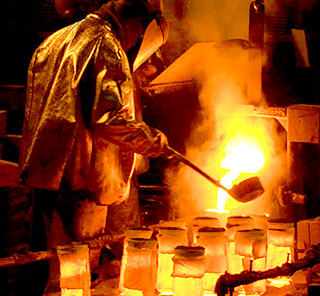Why Does Stainless Steel
Sometimes Rust?
We often receive inquiries regarding the “rusting” of castings purchased as Stainless steel – which is expected to be “rustless.” Sometimes “rust” can originate from minerals and chemicals in water with which the casting has been in contact. However, it is usually the result of oxidation of free iron on the surface of the casting.
This free (unAlloyed) iron can be traced to any of several sources: contact with iron or steel containers during processing or shipping, contact with iron bearing materials such as grinding wheels or blast cleaning abrasives, iron contaminated machining oils, or even from airborne free iron settlement. Free surface iron should not be confused with Alloyed iron, which is a major (60%) component of the stainless steel, or with ferrite, which is a specific type of crystalline structure and a normal component of stainless steels.
Complete removal of free iron from casting surfaces is difficult and requires carefully controlled pickling followed by scrupulous rinsing and painstaking handling. A more practical and usually acceptable method is to pickle the castings using commercial solutions and procedures (See ASTM A380).

